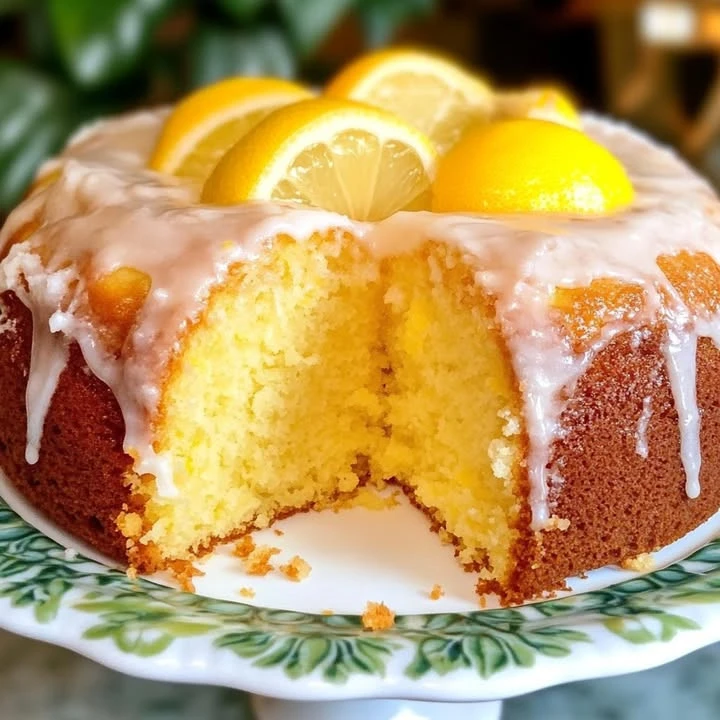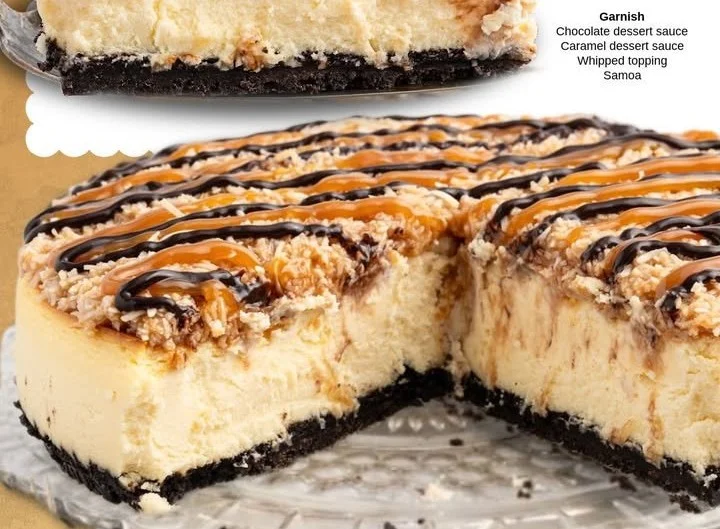Greek Bougatsa

Memories Wrapped in Pastry: My Heartfelt Ode to Greek Bougatsa
Every family has that one recipe—a sweet treat that seems to magically appear at just the right moment. For me, that’s Greek Bougatsa. I can still picture my grandmother, her hands dusted with flour, and the air thick with the scent of fresh pastry and warm milk. She’d hum softly as she rolled the dough, her kitchen window wide open to let in the sunshine (and sometimes, a gentle Aegean breeze). That first bite—creamy, just sweet enough, with a dusting of powdered sugar—was, and always will be, pure comfort. This classic Greek Bougatsa recipe (or “μπουγάτσα” as YiaYia would say) is my way of sharing a little of that kitchen magic with you.
Why You’ll Adore This Greek Bougatsa
Let me tell you—there’s a good reason Greek Bougatsa is beloved in every corner bakery from Thessaloniki to Athens! Here’s why I think you’ll crave it:
- Blissfully Simple: The ingredients are humble, but together, they transform into something decadent. No fancy gadgets or hard-to-find spices, just nurturing comfort food.
- Layered with Love: This is more than just a Greek dessert—it’s all about slow, mindful kitchen time, rolling dough and stirring creamy custard (I find it so therapeutic on busy days).
- Irresistibly Creamy: The filling is silky smooth, thanks to hearty semolina, whole milk, and those luscious eggs—just the right amount of sweetness in every bite.
- Perfect for Sharing: Whether you serve squares hot out of the oven for Sunday brunch or cooled down as an afternoon treat, Bougatsa brings people together. Every bite feels like a warm hug.
Ingredients You’ll Need for Greek Bougatsa
Let’s gather what you need for this authentic homemade dessert (bonus: you probably have most of these pastry staples already!):
- 1 cup all-purpose flour – The base. Go for unbleached if you can; it gives a nuttier flavor.
- 1/4 cup olive oil – Use extra-virgin for a subtle, fruity note (and that Mediterranean flair!).
- 1/4 cup warm water – Just enough to make the dough pliable.
- 1/2 teaspoon salt – Balances out the sweet custard filling.
- 1/2 cup semolina – This Greek pantry staple gives the filling its signature creamy-yet-hearty texture.
- 1/2 cup sugar – White granulated works best, but you can tweak based on your sweet tooth!
- 2 cups milk – Whole milk is classic for a rich custard, though 2% works in a pinch.
- 2 eggs – Room temperature if possible, for smoother mixing.
- 1 teaspoon vanilla extract – Adds warmth and depth (I love using pure vanilla for that dreamy aroma).
- Powdered sugar for dusting – Don’t skip this; it’s that signature “snowy” finish!
Step-by-Step Guide: Making the Perfect Greek Bougatsa
Ready to roll (pun totally intended)? Here’s how I make Greek Bougatsa from scratch, the cozy way:
- Make the Dough
In a medium bowl, combine flour, olive oil, warm water, and salt. Mix, then knead the dough for about 5 minutes until it’s smooth and elastic (if it’s sticky, sprinkle in a little extra flour). Cover and let it rest for 30 minutes. This transforms it into a dream for rolling. - Cook the Creamy Filling
In a saucepan, slowly heat the milk and sugar over medium heat until dissolved and steaming (don’t boil!). Whisk in semolina gradually, stirring constantly to prevent lumps. Cook until thickened—it’ll look almost like soft polenta. - Add Eggs and Vanilla
Whisk your eggs and vanilla together in a small bowl. Take a deep breath (that vanilla scent is pure heaven), then slowly dribble the egg mixture into the hot semolina, stirring nonstop so it becomes glossy and custardy. - Assemble the Pastry
Preheat your oven to 350°F (175°C). Roll out half of your dough to fit a greased baking dish—don’t stress about perfection; a rustic look is part of Greek Bougatsa’s charm. - Add the Filling
Pour your velvety semolina mixture over the base dough layer, spreading evenly. - Seal with Love
Roll out the remaining dough and drape it on top. Tuck in the edges, sealing the creamy filling like a present. (Crimp the edges with a fork for an extra pretty finish!) - Bake to Golden Perfection
Pop it into your preheated oven and bake for 30–40 minutes, checking for that beautiful golden brown crust. Your kitchen will smell like a Greek bakery! - Finish and Serve
Let Bougatsa cool until just warm, then dust generously with powdered sugar. Cut into squares and share—preferably with coffee and laughter.
My Secret Tips and Tricks for Greek Bougatsa Success
- Rest the Dough: Don’t skip the resting step! It lets the gluten relax, making the dough way easier to work with—especially for layering.
- Whisk Constantly: When adding the eggs to the hot semolina, take your time and stir without stopping (this prevents scrambled eggs and keeps the cream filling velvety).
- Olive Oil Magic: Using high-quality extra-virgin olive oil gives the pastry a light, flaky texture and subtle depth—totally worth the splurge.
- Let It Cool: Bougatsa sets as it cools, so if you want clean squares, give it a little patience (I know, hardest part!).
- Dust Before Serving: Powdered sugar soaks in if you add it while hot. Wait until just before serving so every slice stays snowy and pretty.
Creative Variations and Ingredient Swaps
One thing I love about easy Greek Bougatsa: you can riff on it depending on your mood or pantry:
- Cinnamon Twist: Sprinkle a little cinnamon into the filling or on top with the powdered sugar for cozy warmth (cinnamon is classic in many Greek desserts).
- Orange Blossom Water: Add a teaspoon to the filling for Mediterranean flair—blissful with semolina custard!
- Dairy-Free: Almond or oat milk and a vegan egg substitute work surprisingly well in this homemade Greek Bougatsa recipe.
- Phyllo Shortcut: If you’re short on time, use store-bought phyllo dough instead of homemade—brush each sheet with olive oil for flakiness.
How to Serve and Store Your Greek Bougatsa
This is the ultimate shareable Greek breakfast pastry, but here’s how I serve and save it:
- Serve Warm: Greek Bougatsa is at its gooey, heart-melting best while still warm (sprinkle the powdered sugar just before serving!).
- Perfect Pairings: Serve with Greek coffee, a sprinkle of cinnamon, and plenty of napkins for powdered sugar lips.
- Storing Leftovers: Wrap any remaining squares in foil and pop them in the fridge. They’ll keep for up to 3 days—just reheat for a few minutes in a low oven or air fryer to bring back the bakery-fresh crispness.
- Freezer Friendly: Freeze slices individually; reheat from frozen for a quick Greek breakfast or dessert fix anytime!
FAQs: Your Top Questions About Greek Bougatsa Answered
Can I make Greek Bougatsa ahead of time?
Absolutely! You can bake the whole pastry a day in advance, then reheat gently before serving (just add fresh powdered sugar right before serving).
What if I don’t have semolina?
Semolina gives classic Greek Bougatsa its creamy texture, but in a pinch, you can use cream of wheat. The result will be a little softer, but still delicious.
Can I use phyllo dough instead of homemade pastry?
Yes! As mentioned above, phyllo sheets make an easy shortcut. Layer several sheets, brushing with olive oil in between, to get that signature flaky texture.
Is Bougatsa only a breakfast recipe?
Not at all! In Greece, it’s enjoyed any time of day—breakfast, dessert, or even as a sweet afternoon snack. I’ve served it at brunch and after family dinners with equal success.
Can I make this recipe gluten-free?
You can try a gluten-free all-purpose flour blend for the dough, and make sure your semolina is gluten-free as well. The texture might change just slightly, but the Greek flavor will still shine.
From my family’s kitchen to yours, Greek Bougatsa is a sweet slice of Mediterranean comfort—easy to make, endlessly adaptable, and made to share. If you try this recipe, let me know how it turns out! Here’s to powdered sugar smiles and bringing a piece of Greece to your own home, one tender bite at a time.





